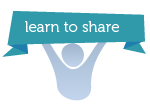Geneeskunde en medicijnen: De beste wetenschappelijke artikelen samengevat
Geneeskunde en medicijnen: De beste wetenschappelijke artikelen samengevat
Artikelen per studiegebied voor geneeskunde en medicijnen in Nederland
- Studiegidsen bij artikelen voor:
- spoedeisende zorg
- gerontologie en latere levensfasen
- Psychofarmacologie
- Zie de supporting content van deze studiegids
Gerelateerde samenvattingen en studiehulp
- Medische studieboeken en standaardwerken: zie Medicine and health care: The best textbooks summarized
- 2243 reads


























